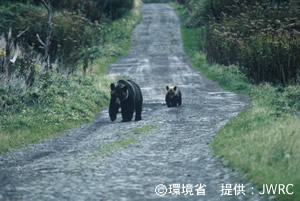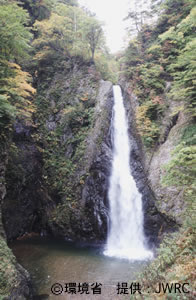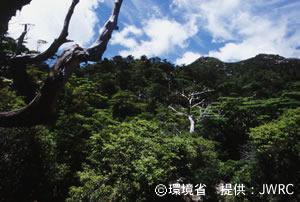The Convention for the Protection of the World Cultural and Natural Heritage (hereafter, the World Heritage Convention) aims to establish an international cooperative and supportive system, based on the recognition that it is important to protect cultural and natural heritage from such threats as damage and destruction, and to preserve such assets as the world heritage of mankind as a whole. In recognizing the importance of these objectives, Japan sought to make a greater contribution to international cooperation in the area of protecting the World Cultural and Natural Heritage, and ratified this convention in 1992.
One distinctive feature of the World Heritage Convention is that it links the value of cultural and natural heritage, which had previously been considered separate, and provides for the protection of both under a single framework as the heritage of mankind. Traditional Japanese culture had developed from ancient times in harmony with nature, such as Japan's natural features, climate, and other characteristics. Therefore, the idea of linking cultural and natural heritage by the World Heritage Convention has deep meaning for Japan.
Japan has been cooperative in preserving and restoring cultural heritage until today through the UNESCO / Japan Trust Fund for the Preservation of the World Cultural Heritage. The country has also been providing various supports to preserve the World Heritage by conserving and managing natural heritage sites in other Asian countries.
Furthermore, Japan served as a member of the World Heritage Committee from 1993 to 1999, as well as from 2004, and has made an even greater contribution toward the goal of protecting World Heritage both within and beyond the scope of the Committee's activities.
As of March 2006, the following ten Cultural Heritage sites in Japan are inscribed on the World Heritage List: Buddhist Monuments in the Horyu-ji Area, Himeji-jo, Historic Monuments of Ancient Kyoto (Kyoto, Uji, and Otsu cities), Historic Villages of Shirakawa-go and Gokayama, Hiroshima Peace Memorial (Genbaku Dome), Itsukushima Shinto Shrine, Historic Monuments of Ancient Nara, Shrines and Temples of Nikko, Gusuku Sites and Related Properties of the Kingdom of Ryukyu, and Sacred Sites and Pilgrimage Routes in the Kii Mountain Range.
There are also three World Natural Heritage sites: Yakushima, Shirakami-Sanchi, and Shiretoko.

Shiretoko

Shirakami-Sanchi

Yakushima |